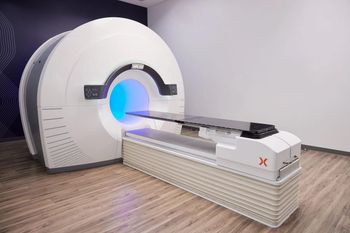New research demonstrates that mammography screening is associated with significantly lower tumor size, a higher percentage of non-invasive disease presentation and greater than 14 percent higher five-year and 10-year survival rates in comparison to clinically detected breast cancer.
For the retrospective study, recently published in the American Journal of Roentgenology, researchers utilized propensity score matching to compare tumor characteristics, treatment use and survival rates in 507 patients with mammography screening-detected breast cancer versus 507 women with clinically detected breast cancer. The mean age for both cohorts was 61.6, according to the study.
The study authors found that women with screening-detected breast cancer had a five-year survival rate of 94.4 percent vs. 79.6 percent for women with clinically detected breast cancer. Detection with mammography screening also led to an 82.7 percent 10-year survival rate in contrast to 66.1 percent for clinically detected cancer, according to the researchers.
“ … Patients in the screening-detected cohort in comparison with the clinically detected cohort had significantly better (overall survival) and significantly better 5-year and 10-year survival rates. The difference in survival between the two cohorts progressively increased overtime. The findings provide further support for professional society recommendations for screening mammography,” wrote lead study author Steven J. Chen, M.D., who is affiliated with the Department of Internal Medicine with the University of Pennsylvania Health System in Philadelphia, and colleagues.
For patients with screening-detected cancers, the researchers noted that 42 percent of tumors were 1 to 10 mm in size in contrast to 13 percent of tumors for women with clinically detected breast cancer. The study authors pointed out that screening-detected cancer was associated with a 26.6 percent higher incidence of non-invasive disease in comparison to clinically detected cancers (35.5 percent vs. 8.9 percent). There were no cases of distant metastatic disease among women with screening detection whereas 7.7 percent of those with clinically detected cancer had distant metastasis, according to the researchers.
Three Key Takeaways
- Improved survival with screening. Mammography screening-detected breast cancers are associated with significantly higher five-year (94.4 percent vs. 79.6 percent) and ten-year (82.7 percent vs. 66.1 percent) survival rates compared to clinically detected cancers.
- Earlier stage and less aggressive disease. Screening-detected cancers were more likely to be smaller (42 percent were ≤10 mm), non-invasive (35.5 percent vs. 8.9 percent), and lacked distant metastasis (0 percent vs. 7.7 percent), indicating earlier and less aggressive disease at diagnosis.
3. Less intensive treatment required. Patients with screening-detected cancers had lower rates of mastectomy (22.1 percent vs. 34.3 percent) and chemotherapy (15 percent vs. 40.2 percent), and were more likely to undergo lumpectomy and radiation therapy, reflecting more conservative treatment needs.
The study authors also emphasized that mammography-detected cancers were linked to lower rates of mastectomy (22.1 percent vs. 34.3 percent) and chemotherapy (15 percent vs. 40.2 percent).
“In the propensity-score-matched cohorts, screening-detected cancers, in comparison with clinically detected cancers, were smaller in size, lower in grade, and earlier in stage. Patients in the screening-detected cohort had higher frequencies of treatment by lumpectomy and radiation therapy, whereas patients in the clinically diagnosed cohort had higher frequencies of treatment by mastectomy, non-surgical management, and chemotherapy,” pointed out Chen and colleagues.
(Editor’s note: For related content, see “Mammography Study Reveals Over Sixfold Higher Risk of Advanced Cancer Presentation with Symptom-Detected Cancers,” “Mammography AI Platform for Five-Year Breast Cancer Risk Prediction Gets FDA De Novo Authorization” and “Can Contrast-Enhanced Mammography be a Viable Screening Alternative to Breast MRI?”)
Beyond the inherent limitations of a single-center retrospective study, the authors noted that approximately 90 percent of the compared cohorts were White women. The researchers also conceded a lack of available data for breast cancer-specific mortality.





























